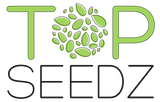Brady is trying to tap into the market for healthy, nutritious food, so her products are certified organic, gluten free, vegan and have very few ingredients, she said. That's the difference between her crackers and the hundreds of other varieties on grocery store shelves and how she hopes to set her products apart.
"It's really simple," Brady said. "There's no secret ingredient. We're not hiding anything.”
The crackers start out as piles of raw ingredients. Brady orders her ingredients in bulk pallets, up to 20,000 pounds at a time, she said. The warehouse is filled with stacks of ingredients, towers of shipping boxes, labels, cleaning supplies and everything else Brady needs to run her business.
To start the process of making the crackers, workers first weigh the gluten-free flour, which is cornstarch or arrowroot, and then add in the seeds. The dry mixture goes into the large industrial mixing bowl, where olive oil and water are added. Top Seedz just bought a new 60-quart stainless steel mixer, which is double the size of the old one, Brady said.
After mixing, the crackers have a paste-like consistency, similar to oatmeal. The workers then roll out the sheets of crackers by hand and put them on trays. The trays go into a large rack on wheels, which then goes in the oven. Each rack fits 40 trays.

The crackers bake in the oven at 350 degrees and cool for about 10 minutes. Then, workers start breaking up the sheets into individual crackers and weigh 5 ounces to put into individual plastic containers. They put a cardboard sleeve label on the containers and put them in cardboard boxes, which are then loaded onto a large wooden pallet for shipping.
Currently, Top Seedz is producing around 3,000 individual containers of crackers per day, or around 60,000 a month, Brady said.
Startups of any background – whether they make artisan crackers or run online car auctions – face similar challenges. They need to scale up the business beyond the idea hatched by the founder. They have to find ways to sell their products to more customers in more markets. And they need to build a team to manage the growth.
Brady and her team are in the process of looking for a larger facility in the region where they can start automating some of its labor-intensive, by-hand production.
Automation will save time, increase efficiency and output and remove inconsistencies and much of the human error, Brady said. It also will bring with it potential for much faster growth, but Brady is still working out how to keep the unique look, texture and taste of the crackers the same with automation.
For example, she might continue to have employees roll out the crackers by hand and automate around that.
"We're still exploring, looking at different equipment that can roll it out," Brady said.
Top Seedz has about 20 employees, most of whom are the refugee women that make the crackers. Brady works with Journey’s End Refugee Services to find people to work at Top Seedz.
Brady, who is from New Zealand and previously lived in Japan and Singapore, likes the idea of creating an “international community” within her business and has described Top Seedz as "woman owned and minority driven."
The refugee women don’t need to know how to speak English perfectly to work at Top Seedz. One of the workers didn’t speak any English when she first started at Top Seedz, but has since worked her way up to becoming a manager, Brady said.
Brady is looking to hire more people to help her run the business side of things. Her husband, William, recently left his corporate job at Moog Inc. and joined the Top Seedz team, and Brady recently hired a direct to consumer sales and marketing manager. Online sales make up 20% of Top Seedz sales, Brady said.
"Rebecca is a very capable individual," Schreiber said. "She's smart. You take those natural ingredients of being smart and capable and add experience, then you have a good blend to continue growth.
"It's not possible to do everything as an enterprise grows," Schreiber said. "She’ll learn to manage the people, instead of managing the job that the people are doing."
Brady wants to double her revenue by the end of the year, and she wants to see her products in thousands of stores in the next few years.
"There's massive room for growth," Brady said. For instance, Whole Foods has 12 regions around the country, and Top Seedz only sells to stores in four of those regions at the moment.
Brady is a sports fan – her company’s name Top Seedz is a sports reference, with a Z thrown in for New Zealand – and she is an avid squash player. She compared running her business to a game of squash.
“When you play squash, when you get to the ball, your footwork is really important," she said. "If you take an extra step, that’s an extra stop to get back to the optimum spot (on the court). All the time, I’m thinking about all of that here. Like, you have to take the minimum most efficient moves to be efficient and make money and give everyone a job. If we are slow and inefficient, there’s no way you can be profitable.”
News Business Reporter Matt Glynn contributed to this report.











